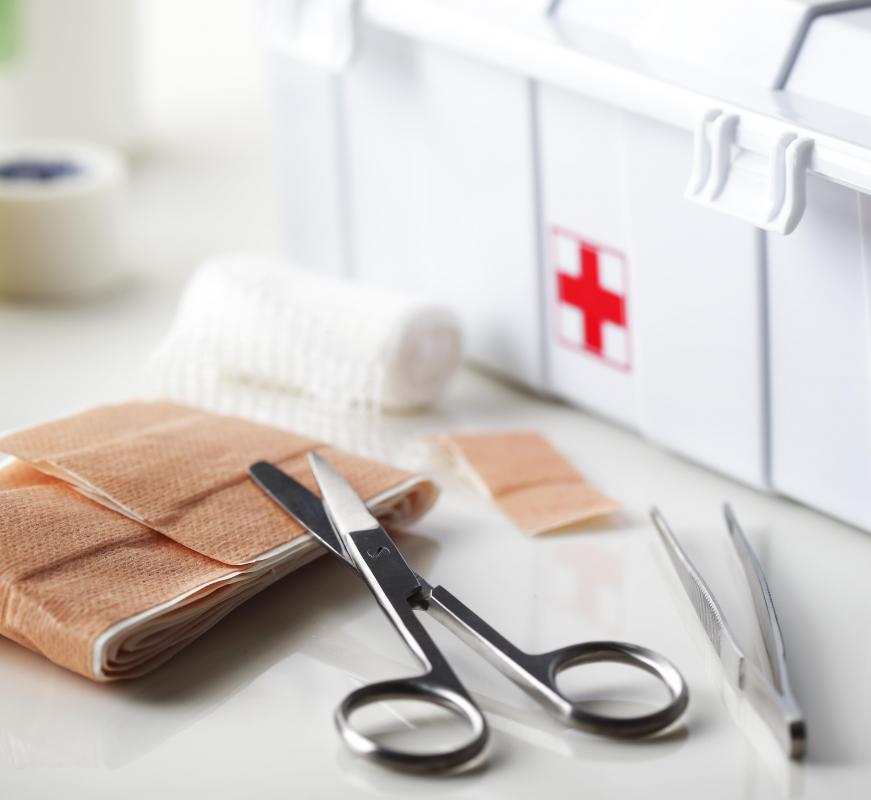At TheHealthBoard, we're committed to delivering accurate, trustworthy information. Our expert-authored content is rigorously fact-checked and sourced from credible authorities. Discover how we uphold the highest standards in providing you with reliable knowledge.
What Is an Air Splint?
An air splint is used to immobilize a fracture using an inflatable support. They are plastic structures preformed in a factory to fit a specific part of the body. Typically, an air splint wraps around an arm or leg and holds the bones still while the patient is moved to hospital. This type of splint is not generally used for longterm support of a fracture as it is less secure and provides less structural support than plaster splints or fiberglass splints.
When not in use, the splint is a flattened structure with a valve for inflation. Usually, an air splint can be inflated by a person blowing into the valve and then closing up the valve. Mechanical inflation is not necessary and may in fact be dangerous, as too high a pressure may be reached. As these splints need to fit around the injured part of the body, they are designed to suit various extremities of the body, such as the feet, legs or arms.

Immobilization in an emergency situation is the primary function of an air splint. One advantage of an air splint is that it is easily packed into a first aid kit, when uninflated. In an emergency, the splint can be very quickly inflated to support the affected limb, compared to some other types of splints. It is also very easy to remove after it has been deflated, and some come with zipper openers to facilitate this.

On the other hand, a splint inflated with air and made of plastic is much more fragile than some other types of splints such as plaster splints. For example, an air splint can become punctured, and it may become deflated over time. The person wearing the splint may find the plastic uncomfortable to be next to the skin, although application of a powder like talcum powder may prevent the skin sticking to the plastic.
Overinflation of the splint can also reduce blood supply to the affected limb, but this is a common risk of most other types of splints as well. When an accident patient has to fly by air to a hospital, though, the air splint requires partial deflation so the change of air pressure at altitude does not squeeze the injury too much. Alterations in temperature, and therefore in air pressure, can also affect the pressure inside the splint, so the splint may also need to be adjusted in these situations.
AS FEATURED ON:
AS FEATURED ON:












Discuss this Article
Post your comments